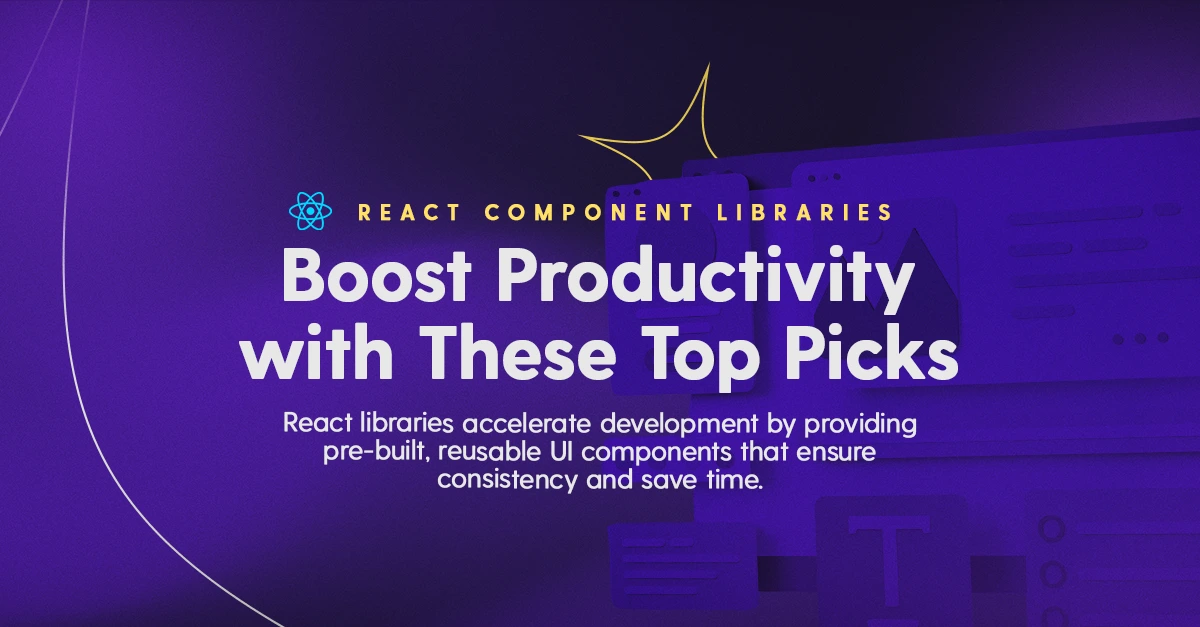What is React and Why is It Popular?
React is a JavaScript library that has reshaped modern web development. Created by Facebook, it empowers developers to build dynamic, interactive, and scalable user interfaces. With its innovative features, React has become the cornerstone for creating everything from personal blogs to enterprise-grade applications. It is currently the most popular frontend development framework according to github and is used by the majority of large scale internet startups including Facebook, Airbnb, Netflix, Instagram and many more.
At Dittofi we have seen firsthand how transformative React can be. Having built over 150 React-based apps in just the last year—including our own React Auto Code Generation technology—we understand the challenges and opportunities that come with using this technology. Our work has spanned industries as diverse as edtech, p2p marketplaces, SaaS apps and much more, giving us the insight to guide you toward making the most of React.
What is React?
At its core, React is a library for creating user interfaces through a component-based architecture. This means developers can break down their applications into smaller, reusable pieces of code called components. Each component manages its own logic and rendering, which makes it easier to build, maintain, and scale even the most complex applications.
One of React’s standout features is its Virtual DOM. Unlike the traditional DOM, the Virtual DOM optimizes updates by only re-rendering the parts of the UI that change, rather than refreshing the entire page. This results in lightning-fast performance, even for data-heavy or interactive applications.
Why Developers Love React
Ask any developer about their favorite tools, and chances are React will come up in the conversation. Why? Because React doesn’t just make coding easier—it transforms how developers approach building apps.
1. It’s Fast, Like Really Fast
React’s Virtual DOM ensures your app updates only the parts that need it, meaning users get a buttery-smooth experience without long load times. Whether you’re crafting a simple blog or a feature-packed dashboard, speed is never an issue.
2. Reusable Components for the Win
Imagine writing a piece of code once and reusing it across your entire project. React’s component-based architecture is like LEGO blocks for developers—modular, reusable, and endlessly customizable.
3. A Playground of Tools
With a rich ecosystem that includes component libraries like Material-UI (more on this later) and frameworks like Next.js, React offers endless possibilities. Developers don’t just build with React—they innovate.
4. The React Community Has Your Back
Stuck on something? React’s massive, global community means there’s always someone ready to help. From forums to open-source libraries, support is just a click away.
React has transformed the way developers create web applications, offering tools that are both powerful and intuitive. From reusable components to a rich ecosystem of React libraries for UI, developers have everything they need to create scalable, dynamic applications.
But why stop at building everything from scratch? React component libraries offer a treasure trove of pre-made components, giving you the flexibility to build faster without compromising on quality. Here’s everything you need to know about these libraries and how they can supercharge your development process.
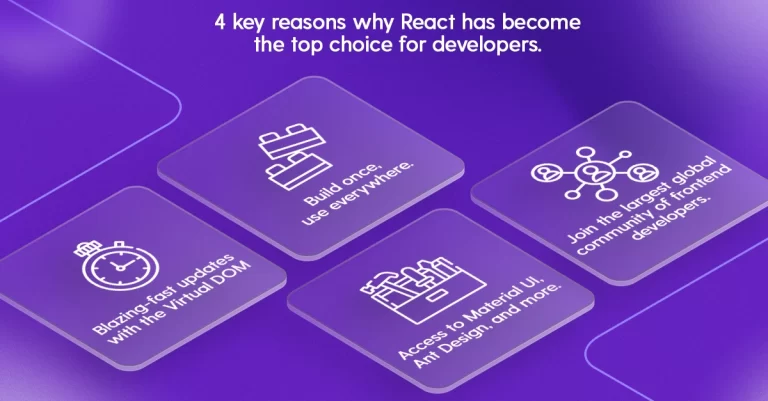
What Are React Component Libraries?
Imagine you’re baking a cake. You could buy all the ingredients, measure them out, and make everything from scratch—or you could use a ready-made cake mix. React component libraries are like that mix: they provide pre-built UI components, such as buttons, modals, navigation bars, and forms, that you can drop into your app and customize as needed.
These libraries save you from reinventing the wheel, offering solutions that are ready to go but still flexible enough to fit your unique project. Instead of getting bogged down in the nitty-gritty details, you can focus on creating the features that make your app stand out.
Whether you’re a solo developer or part of a larger team, top React component libraries are your shortcut to a polished, professional interface—without sacrificing quality or creativity.
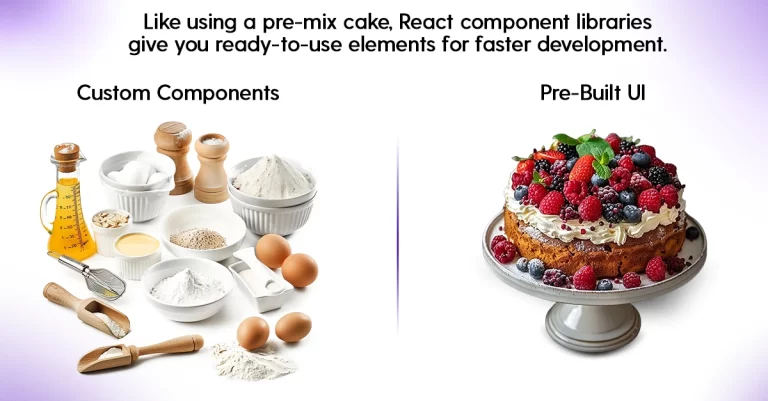
Advantages of Using React Component Libraries
Building an app can feel like running a marathon. There’s so much to do, and the finish line can seem miles away. That’s where best React component libraries come in—they’re like a head start, giving you the tools to speed up development and make the journey smoother.
1. Speed Up Your Workflow
Stop wasting time on basic UI elements like buttons and modals. Libraries have them ready for you—just plug, play, and customize. It’s like having a shortcut button for your project.
2. Keep It Cohesive
Ever seen an app that feels… off? Maybe the buttons are one style, the forms another, and nothing matches. Component libraries make sure your app looks polished and professional, with a consistent design across the board.
3. Save Your Budget
Time is money, and coding from scratch eats up both. React libraries for UI let you save time while getting high-quality components for free or at a fraction of the cost.
4. Learn from the Pros
The best libraries are built by experts who’ve already solved the hard problems. By using them, you’re getting access to world-class solutions without having to reinvent the wheel.
Imagine having an entire workshop filled with ready-made tools, each designed to save you time and make your app look incredible. That’s what top React component libraries offer—a shortcut to polished, professional UI designs that enhance both productivity and creativity.
The Best React Component Libraries: A Closer Look
Choosing the right React component library is like picking the right set of tools for a DIY project . If you choose correctly, the tools will make the work faster, easier and more polished. But if you choose the wrong tools, they can slow you down, make your project harder to complete and lead to a frustratingly sub par outcome. But with so many options out there, which React component library should you pick? Here’s a breakdown of the top contenders—and why they might be perfect for you.
Why Material UI is Preferred for E-Commerce and How Ant Design Excels in Global Enterprise Workflows
Material UI and Ant Design stand out as two of the most trusted React libraries for enterprises, each excelling in specific areas of application. These libraries cater to the diverse needs of businesses, from crafting seamless e-commerce experiences to managing complex, global workflows.
Material UI (MUI): The Heavyweight Champ
E-commerce platforms require speed, consistency, and scalability—and Material UI delivers on all fronts. Its robust set of components, such as responsive grids, dynamic cards, and advanced forms, makes it easy to showcase products in a way that’s both visually appealing and functional.
One key advantage is Material UI’s theming capabilities, which allow e-commerce brands to match their platform’s aesthetic to their unique identity. This flexibility ensures a polished, professional look that instills trust in customers—a vital factor for online retail success. Additionally, Material UI adheres to accessibility standards, ensuring that shoppers of all abilities can navigate and interact with your store effortlessly.
Example in Action:
Global retail leader UNIQLO uses Material UI to create a uniform shopping experience across its e-commerce platforms. Whether users are browsing on mobile or desktop, Material UI ensures a fast, intuitive interface, keeping customers engaged and reducing cart abandonment rates.
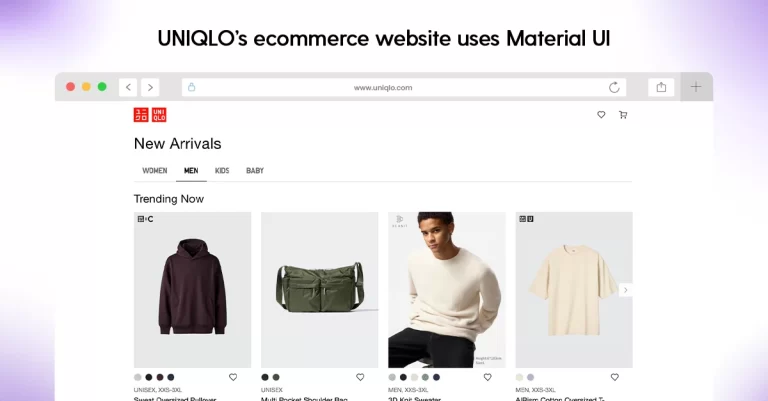
Ant Design: Powering Complex Global Workflows
For businesses with extensive operations and global reach, Ant Design offers an unparalleled solution. Known for its enterprise-grade features, the framework provides advanced components like data tables, charts, and form builders, making it perfect for building admin dashboards, analytics platforms, and other workflow-heavy applications.
Ant Design’s internationalization support stands out, allowing companies to seamlessly localize their applications for multiple languages, currencies, and cultural nuances. This capability is especially crucial for global enterprises that need to maintain consistent user experiences across diverse markets.
Example in Action:
Tech giant Tencent leverages Ant Design to create a cohesive design language across its diverse suite of applications, ensuring scalability and usability. Similarly, Alipay, a global payment platform, depends on Ant Design to manage intricate payment processes, providing users with a streamlined and intuitive interface.
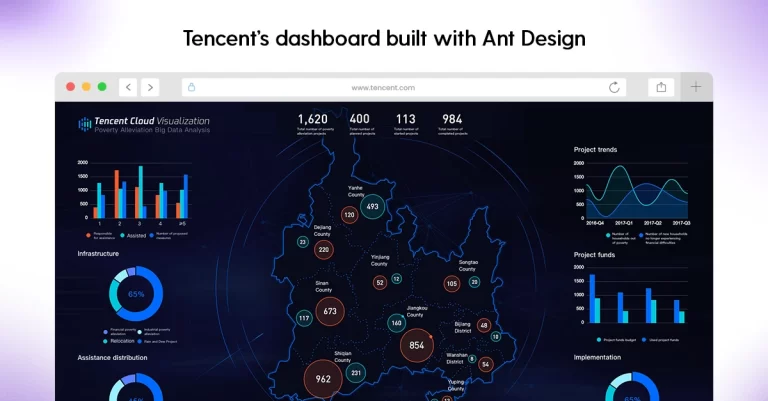
Why These Libraries Dominate Their Fields
- Efficiency: Pre-designed components reduce development time, allowing teams to focus on building features rather than UI basics.
- Customization: Material UI’s theming system ensures every e-commerce platform stands out, while Ant Design’s minimalist design supports complex workflows without clutter.
- Global Scalability: From Material UI’s accessibility features to Ant Design’s localization tools, these libraries cater to the unique needs of businesses operating on a global scale.
Why Chakra UI, React Bootstrap, and Semantic UI React Shine for Lightweight Applications
While Material UI and Ant Design dominate enterprise-grade applications, not every project needs such heavyweight solutions. For smaller apps, quick prototypes, or teams prioritizing simplicity and speed, libraries like Chakra UI, React Bootstrap, and Semantic UI React stand out. These lightweight options prioritize flexibility and ease of use while maintaining robust design and functionality.
Chakra UI: Flexibility Meets Accessibility
Chakra UI is the go-to library for developers who value accessibility and design flexibility. With its modular components and built-in dark mode support, Chakra UI ensures modern, responsive designs that cater to diverse audiences.
Chakra’s accessibility-first approach makes it ideal for apps that prioritize inclusivity, while its modular structure allows developers to customize components effortlessly. Whether you’re building a startup MVP or enhancing an existing app, Chakra UI’s intuitive design system reduces development friction and fosters creativity.
Example in Action
Platforms like Orbital Chat leverage Chakra UI’s accessibility features to create seamless and user-friendly interfaces for communication apps. Similarly, LUGGit, a luggage delivery service, uses Chakra UI’s modular components to build sleek and functional booking experiences, proving its adaptability across industries.
React Bootstrap: The Classic with a Modern Twist
React Bootstrap combines the familiarity of Bootstrap with the modern capabilities of React. Known for its simplicity and responsiveness, it’s a favorite for teams looking to build reliable interfaces quickly.
React Bootstrap is particularly appealing to those familiar with traditional Bootstrap, offering an easy learning curve while ensuring mobile-first, responsive designs by default. Lightweight and reliable, it’s a great option for small projects or quick turnarounds.
Example in Action
isgood.ai, an AI-driven platform, relies on React Bootstrap for its mobile-first approach, ensuring clarity and responsiveness. Likewise, Chaskiq uses React Bootstrap to simplify customer communication through clean, user-friendly interfaces.
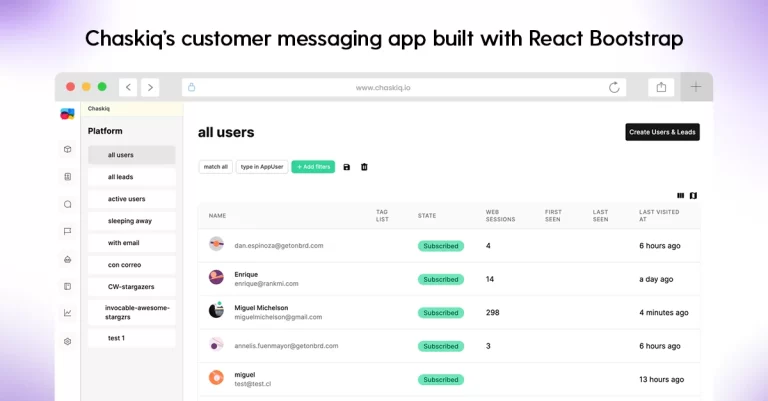
Semantic UI React: Fast Prototyping Made Simple
For developers working under tight deadlines, Semantic UI React offers a straightforward and intuitive way to build prototypes or small apps. Its simple theming and styling options allow teams to focus on functionality without getting bogged down in complex configurations.
Semantic UI React is especially effective for quick turnarounds, enabling developers to translate ideas into functional designs at lightning speed. Its smaller size and easy implementation make it ideal for startups or teams looking for a minimalist, effective solution.
Example in Action
CreativeFolks uses Semantic UI React to develop sleek prototypes that impress clients during pitches, while BreezyTasks, a task management startup, leans on its simplicity to iterate quickly and efficiently.
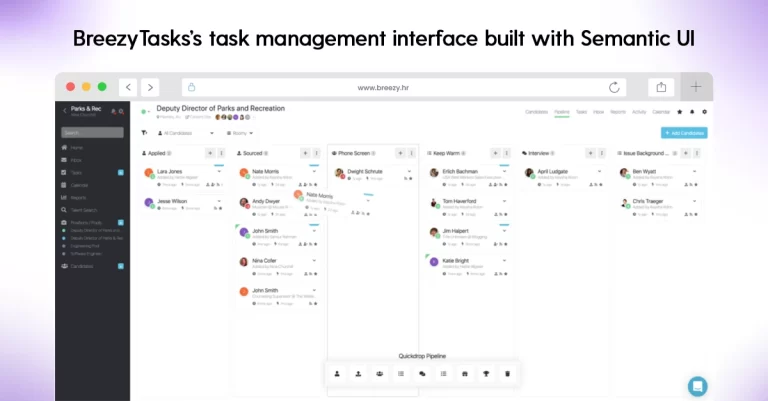
Why These Libraries Excel for Lightweight Projects
- Speed: Their lightweight nature allows for quick integration and faster time-to-market.
- Accessibility: Chakra UI’s focus on inclusivity and Semantic UI’s straightforward design ensure user-friendly apps.
- Ease of Use: React Bootstrap and Semantic UI React lower the learning curve, making them perfect for teams with tight deadlines.
While enterprise-grade libraries cater to large-scale needs, lightweight options like Chakra UI, React Bootstrap, and Semantic UI React prove that smaller-scale projects can still achieve elegance, efficiency, and functionality. These libraries offer developers the flexibility to innovate without overcomplicating the process—an essential feature for modern app development.
Which Framework Should You Choose?
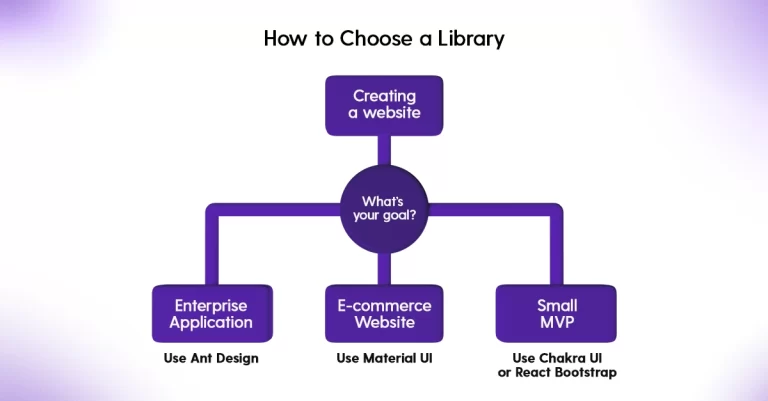
When picking the right React UI framework, it’s all about knowing your project’s needs:
- Need enterprise-level power? Go with Material UI or Ant Design.
- Want flexibility and accessibility? Choose Chakra UI.
- Looking for familiarity and simplicity? Try React Bootstrap.
- Prototyping an MVP? Dive into Semantic UI React.
React component libraries are more than just time-savers—they’re creativity enhancers. With the right library, you can build apps faster, better, and more beautifully.
Ready to level up your React game? Let’s move on to how to choose the one that’s right for you!
Sign Up and Get Started for Free Today!
Build Software Without Writing a Single Line of Code!

